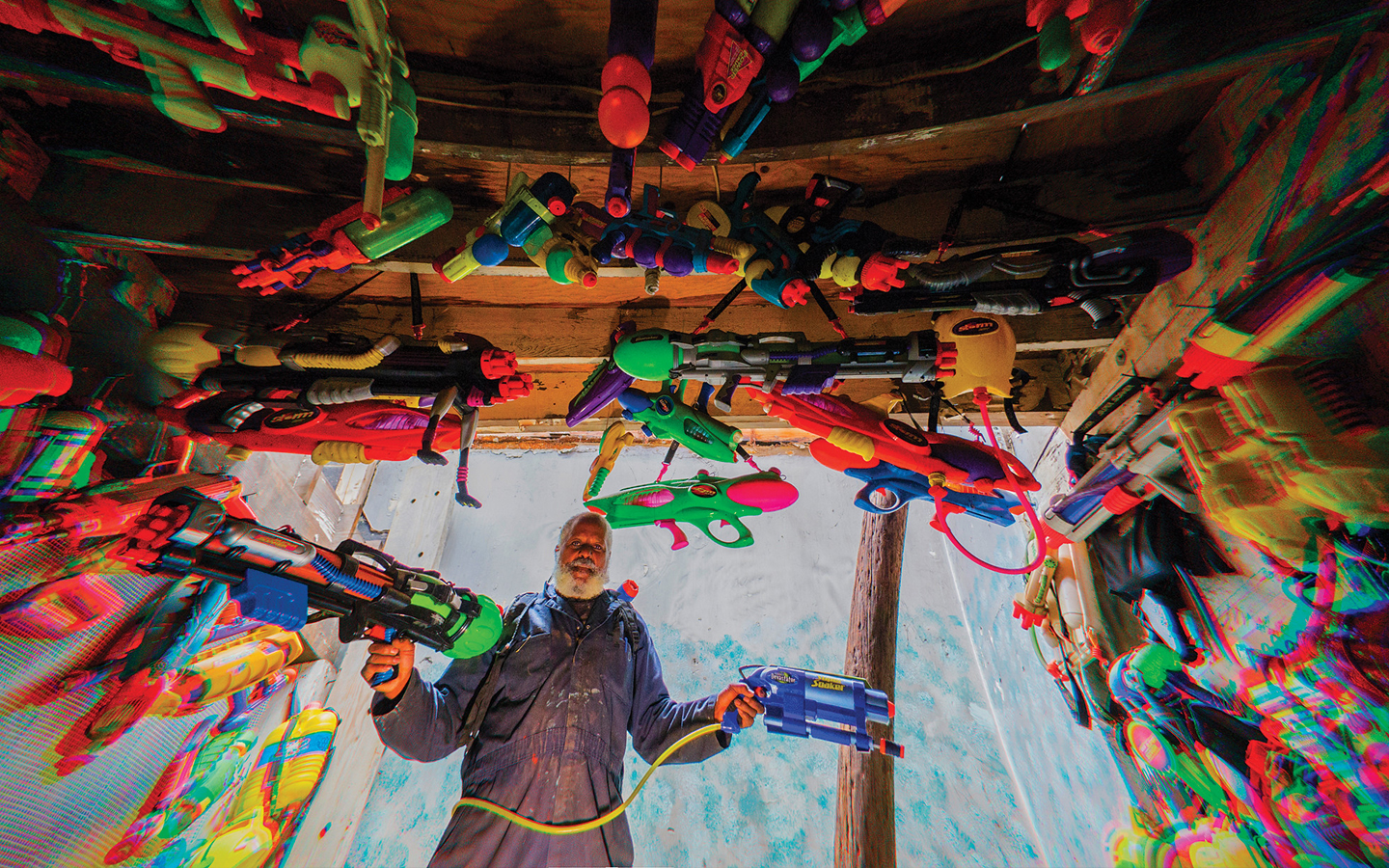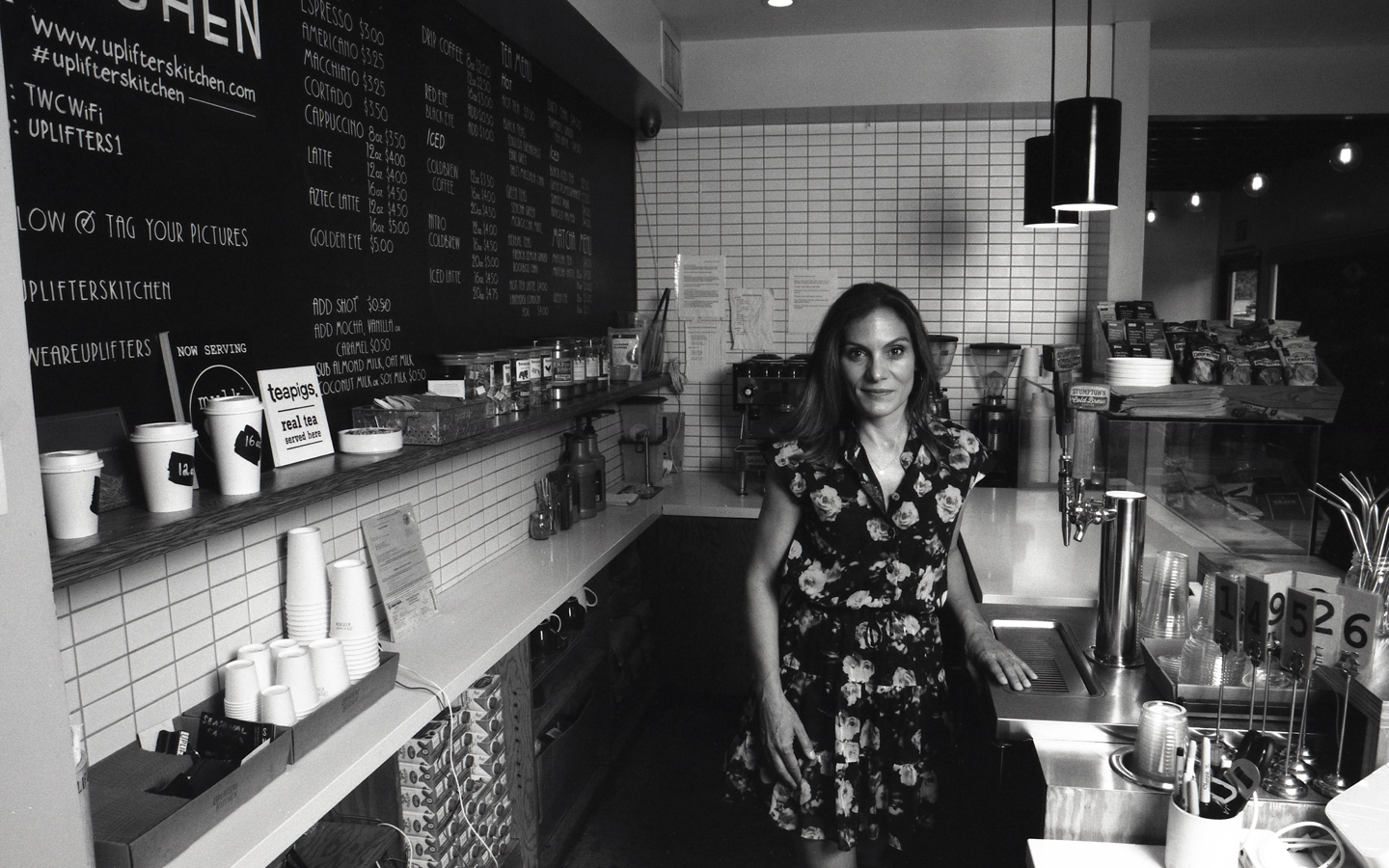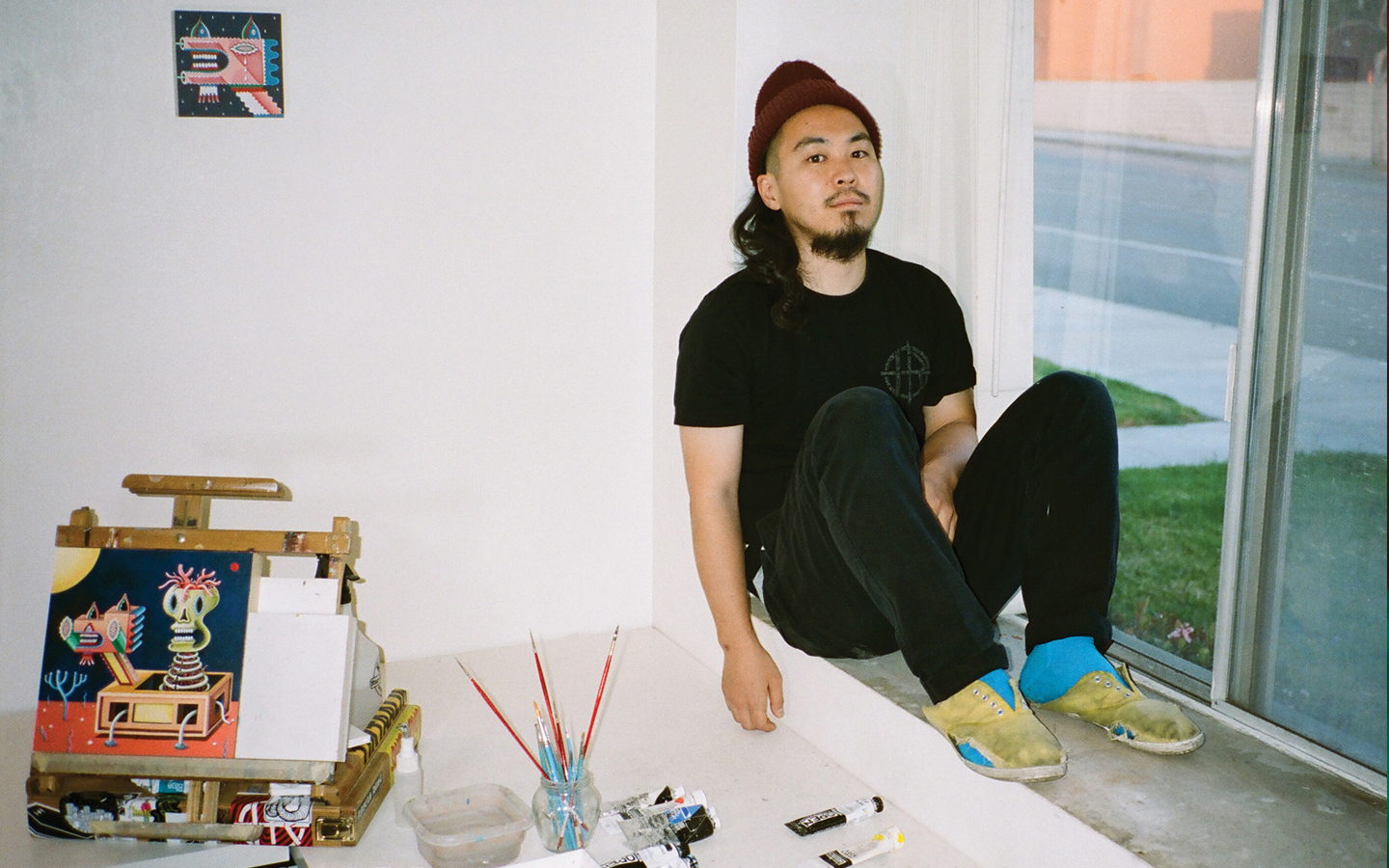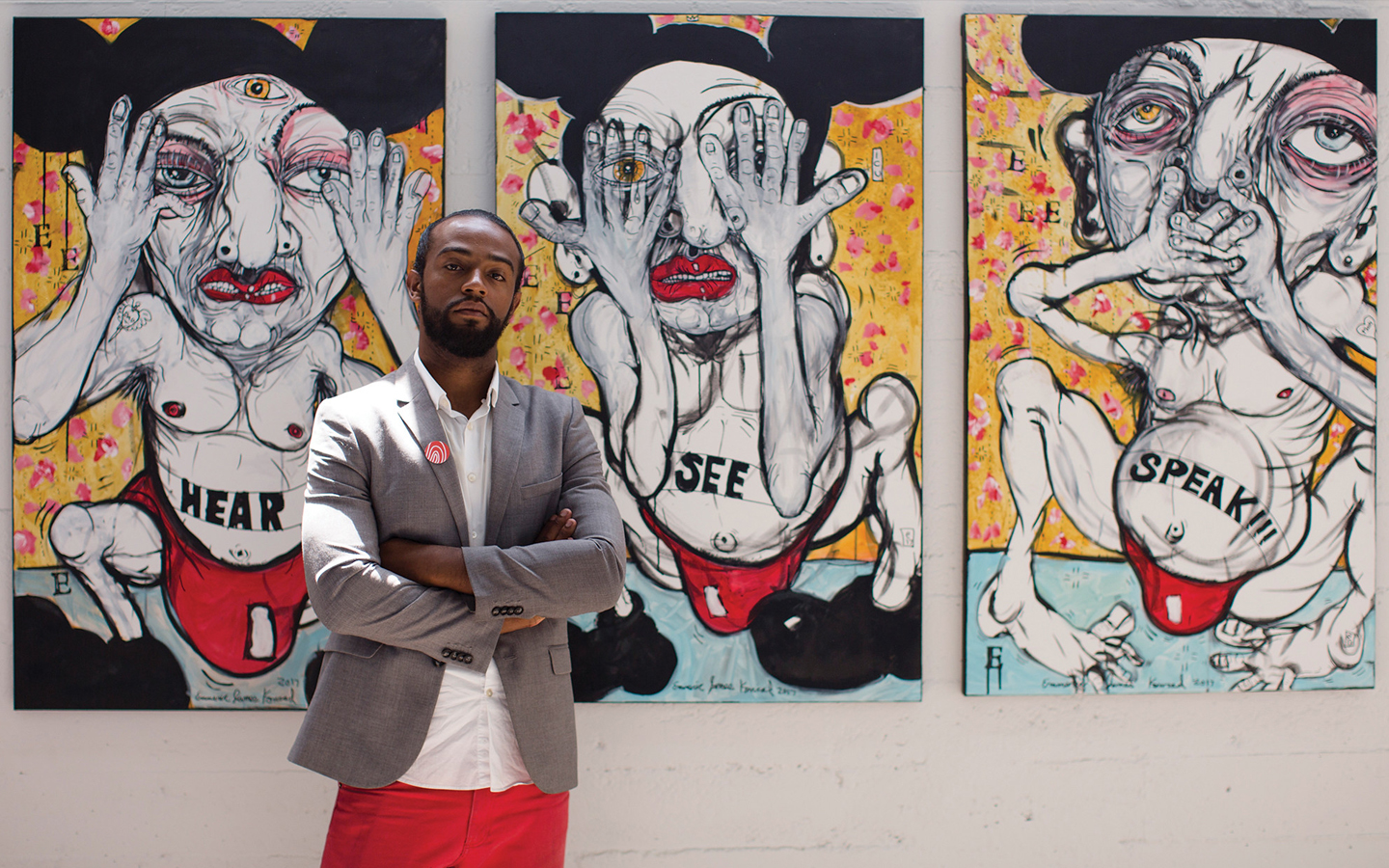
Charles Dickson
TEXT GENIE DAVIS
VISUAL FARIDA AMAR
“I like to make things; I like to make things well… it’s part of my gift to be excited about the process,” artist Charles Dickson says.
And what a gift it is. Charles started making things as a five-year-old child afflicted with asthma, when he became interested in making his own toys. Today, he is a renowned artist-in-residence at the Watts Towers Art Center Campus, exhibiting in a group show, The Eye Sees Not Itself, at the international Nicodim Gallery in Los Angeles, and the creator of many works of iconic public art. Born and raised in LA, he currently lives and works in Compton.
But let’s go back to the beginning: he was initially inspired by a neighbor carving the figure of Sinbad the Sailor with a pen knife. “The carving was just from a little piece of wood. It was incredibly fascinating to me, and I became hooked right away,” he laughs. “I started using my mom’s butcher knife, and then my uncle gave me a penknife, and any kind of tool that whittles wood away – I was there. And then to test a tool out for the sharpness, I would carve on my family’s furniture.”
Encouraged with his art in junior high and high school, Charles searched through several collegiate education systems, including Long Beach State, UCLA, and Otis. “I was thinking about being something besides an artist, but I was open to whatever I could do to accomplish my enjoyment with making objects, preferably from wood. I thought I was going to be a cabinet maker, but I was still sickly – so I had to throw that out, and I stuck with my carving and with making sculptural objects, figurative pieces.”
Dickson wandered a bit but then had an epiphany. “I made up my mind that artists did art, and I started working with canvasses and collage, and a lot of those pieces were 6×4 foot canvases that I stretched. I took plastic I actually got out of the Watts riot, and I glued it to the canvas along with burnt paper and things like that, and did figurative things with that,” he recalls. But he never really stopped carving. “I was always still carving. That was my creative obsession. Any time I could, I was carving ironwood.”
An instructor took him to the Mojave desert to find some pieces of wood, and one, which he created as a Madonna, ended up at the San Juan Capistrano Mission on display. “It was a traditional Madonna piece, then I did another piece, a black Madonna composed of a pregnant woman holding a newborn child with a two or three-year-old on her hip, and she was holding a cotton sack.” He relates that the sack came from the natural gorge in the log he had carved.
“I was going with the flow of the material, and it ended up that I was actually giving the wood the homage that it deserved, of being what it was. When I carve a log now, I always go with that log’s particular shape and often leave the bark on, so you can actually see where I began, where the tree was and where I did my work. it shows that i used every conscious move to give homage to the material itself.”
Dickson works with a wide variety of materials besides wood, including wax. He recalls that as a child, “I used the old Halloween moustaches and teeth, I would work on that material and reshape it, shape fish, and put them in my mom’s refrigerator to make them hard.” He works with Roma clay, casts bronze, and learned to make molds, which he terms a “big survival mechanism” for a sculptor.
He has created everything from an installation at the El Segundo Green Line metro station, “Divine Order: the Manifestation of the Soaring Spirit,” which pays tribute to the El Segundo blue butterfly, to a massive Dr. Martin Luther King Memorial, a 20’ pulpit shaped monument featuring a hummingbird landing on an outstretched hand in Watts.
Wishing on a Star, a 17-foot outdoor metal sculpture, is part of the museum collection at the California African American Museum in Los Angeles. He’s held numerous extensive gallery and museum exhibitions, and he is the recipient of countless awards and honors, including a recent certificate of appreciation and recognition from LA City Councilwoman Janice Hahn. She rightly stated that his “outstanding work has allowed us to see the beauty that surrounds us, and the talent that comes from the African American community.”
The now 71-year-old Dickson views his accomplishments as a gift – one he continues to share. “Being an artist is a way to pray and to create the visions of the past, present, and the future. It is a need to continue, to establish a trail that reflects my growth as a sculptor, as an African American.”
Dickson has worked at the same foundry at the Watts Tower Art Center for the last 35 years, including shaping a current project there: an impressive, life-size bronze figure of Simon Rodia to go in front of the campus.
“It’s all the same processes I have done all these years, manifesting, becoming. I am becoming. At the same time that I am working on this bronze, I am carving wood for a walking stick. I am collecting Five-Hour Energy bottles, which I consume every other day. I keep the bottles, I keep all the containers of anything from surgical plastic that can be sterilized. I repurpose that into any form I want. Right now, I started by creating a little pregnant figure torso and I have entered a point where I’m embedding it into a foam element and carving that. It’s all about ‘can I do it?’ and ‘what does it look like, what is the breakthrough?’”
Dickson is also an inventor. “I invented an artistic process, and I think that process has to go into an invention book to note that there is another African American who has invented a significant process,” he states. The invention is a process called HISPUF, High Impact Styrene Plastic Urethane Foam Core. “It’s a significant process,” he says, “it enables me to take plastic structures and put them on the walls and mimic anything in three dimensions, and it has a tenth of the weight of fiberglass. I’ve upgraded the process to use an ABS plastic now, one that I can exhibit externally, put it outside, bury it, put it in water.” Dickson even had to create his own tools to shape this work, strapping together four heat guns into one nozzle. “I even had to make an extension cord to make the process work. But I waited at least 25 years before I blatantly said I invented it,” he laughs.
His work at Watts Towers is equally accomplished and varied. “I have more or less created a niche for myself there because of my involvement in public art in different media. If they need something, I say yes, of course. Whether it’s a fence or a gate, or the Spirit Tree which I created between the Towers and the center itself.” That project came about when a 28-foot-tall tree was cut down, and he had the “notion of welding three towers that would mimic the Watts Towers themselves,” and placing it there. He calls much of his work “guerrilla architecture because the bureaucracy is just so stuck,” and he notes that his engineering background is “similar to that of Simon Rodia, an innate thing.”

Overall, Dickson says “Part of what I am doing as an artist, what I feel my gift and ability have enabled me to do, is to understand. I am trying to fill in gaps and develop a language as an aesthetic, as a black American. Because we were so chopped up and so much taken from us, we are building something here.” He adds “I want people to read my work. If there are faces on it, they mean something. If there is a color pattern that means something. My theories might be broken up in pieces, but you can read it just like Egyptian hieroglyphics. I want people to know it is more than me that is working with this particular thing. I am very hooked into spiritual understanding; that’s very important to me.” Dickson asserts that “We are all the same. We come from this one whole thing we have yet to really understand, but it is there and we need to pay more attention to it.”
For Dickson, it isn’t just that he is a self-taught artist – he is a highly spiritual one. “I am divinely taught,” he stresses. “It’s a gift. It’s an innate thing that I do. I am driven to stay on course… if there is a sin, it is for me not to use my gift.”
There is little chance of the talented, driven Dickson becoming a sinner, then.
You may also like
Elisabet Spaulding of Uplifters Kitchen
Elizabet comes from a family of small business owners…The ability to go out and do it, create it,
Yu Maeda
“The skeleton holds a lot of meaning,” Maeda said. “Japanese tattoo artists use it as a symbol




